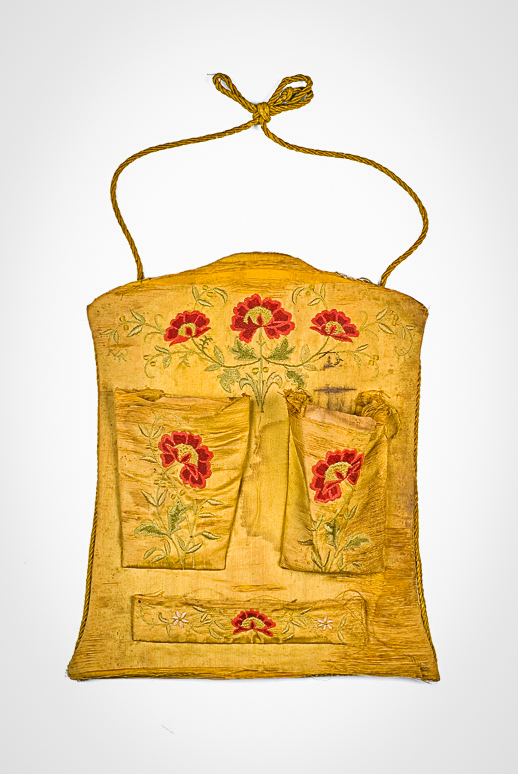The Pontian Women’s Association was founded in 1904 under the name ‘Relief’-Trapezounta Women’s Sisterhood, with the aim of supporting young women by providing them with employment and education. After the population exchange, the association adapted to the needs of the time and was re-established in Thessaloniki in 1923 under the name ‘The Pontian-Caucasian Women’s Association of Macedonia’ on the initiative of Thaleia Saoulidou and the Theofylaktos couple, Ifigeneia and Theofylaktos. It was one of the few women’s refugee associations in the country at the time and it supported young women mainly by teaching them embroidery, sewing, and handiwork, and offering them relevant employment. The association thrived in the interwar period when its handcraft workshop flourished, but started struggling after the war, leading the association to change course and found the ‘Young Woman’s Home’, which hosted young women coming to Thessaloniki to study or work. After the fall of the military junta in the 1970s, the association continued its social welfare activities, establishing a child care centre in 1976 and an old people’s home named ‘Diamantideios Home’ in 1990.
The Museum of the Pontian Women’s Association, called ‘Embroidering memory’, was inaugurated in 2005. The original idea was to organise an exhibition of the association’s handcrafts, keepsakes, and mementos and publish it in a catalogue so as to celebrate the association’s centenary. However, through contact with members and friends of the association, the endeavour was expanded and transformed. It became a museum where the world of women’s work, the world of sewing and handiwork coheres with the wider story of the association and of the Pontian refugees to Thessaloniki in general. The museum inspired many people to donate objects and share stories, preserving the memory of the refugee experience, the resettlement in Thessaloniki, the development of the Pontian identity, and one hundred years of community action.
Many of the objects in the museum came from Pontus and Russia, traversing space and time. Some of them may have gradually lost their functionality, but they have all become tangible, material bridges of identity and memory: the embroidered brush case of Elisavet Theodoridou (nee Grammatikopoulou) from Kars, Russia. From Trapezounta (Trabzon), one of the two curtain panels covering an icon display known as ‘kourtinaki’ or ‘keimilio’, embroidered in a paisley pattern (lahuri in Turkish, a pattern widely used in Pontus). An icon of Agios Georgios (19th century) and a Singer sewing machine, used from 1911 onwards, first in Trapezounta and then in Thessaloniki.
—
References:
Eleonora Skouteri-Didaskalou (ed.), Embroidering memory, from Trapezounta to Thessaloniki, The Pontian Women’s Association Museum, Thessaloniki 2011. [in Greek)
Learn more about the Pontian Women’s Association εδώ.

